SOLUTION 3: a.) Here are sketches of the base of the solid and the entire solid.
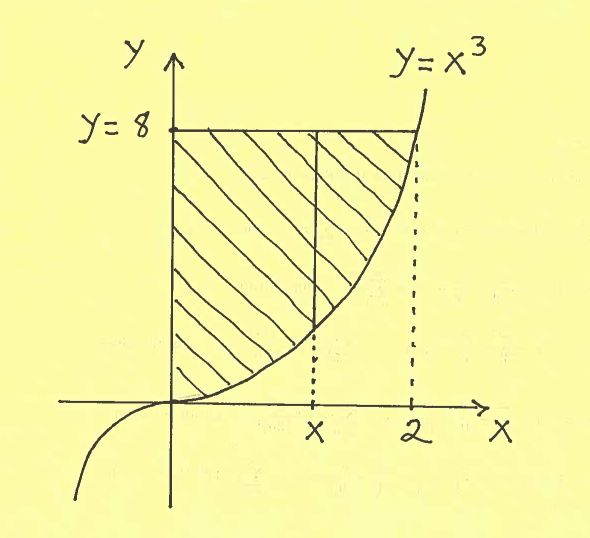 $ \ \ \ $
$ \ \ \ $
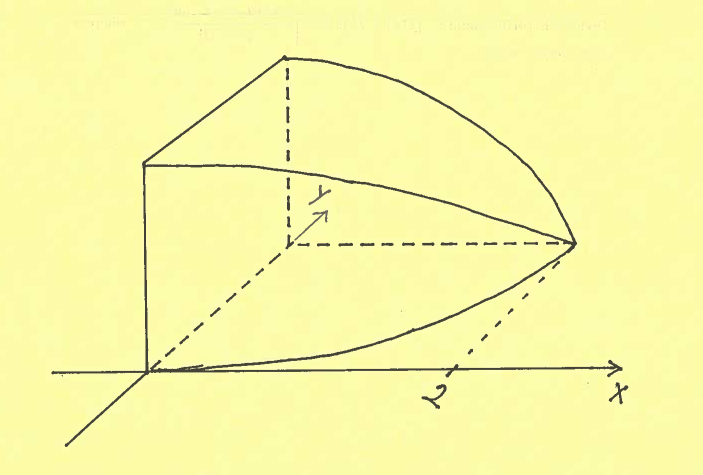
Here are sketches of a square cross-section at $x$, together with it's dimensions.
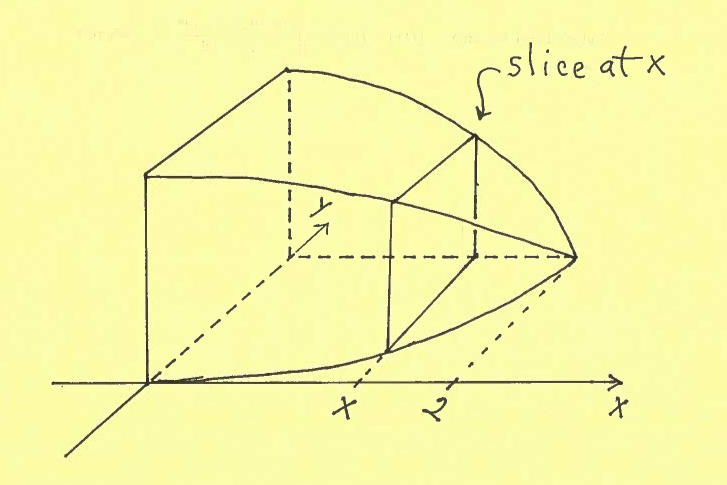 $ \ \ \ $
$ \ \ \ $
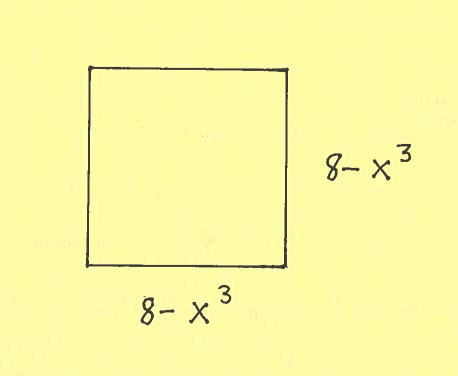
The area of the square cross-section is $ A(x)= (edge)^2 = (8-x^3)^2 $. Thus the total volume of this static solid is
$$ Volume = \int_{0}^{2} (8-x^3)^2 \ dx $$
SOLUTION 3: b.) Here are sketches of the base of the solid and the entire solid.
 $ \ \ \ $
$ \ \ \ $
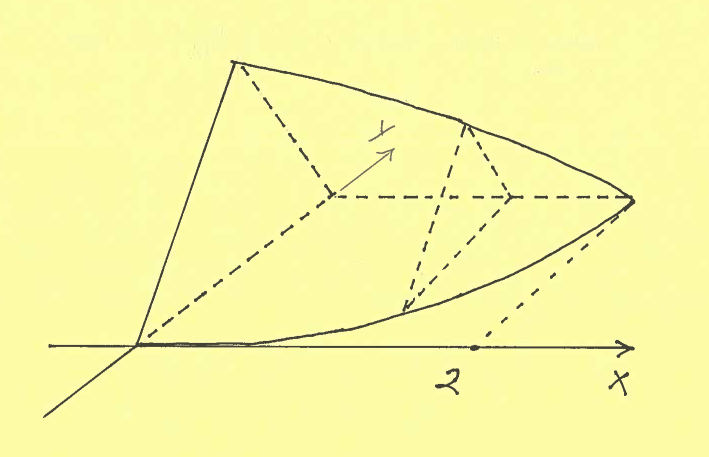
Here are sketches of an equilateral triangular cross-section at $x$, together with its dimensions. We need to figure out the height and area of this equilateral triangle.
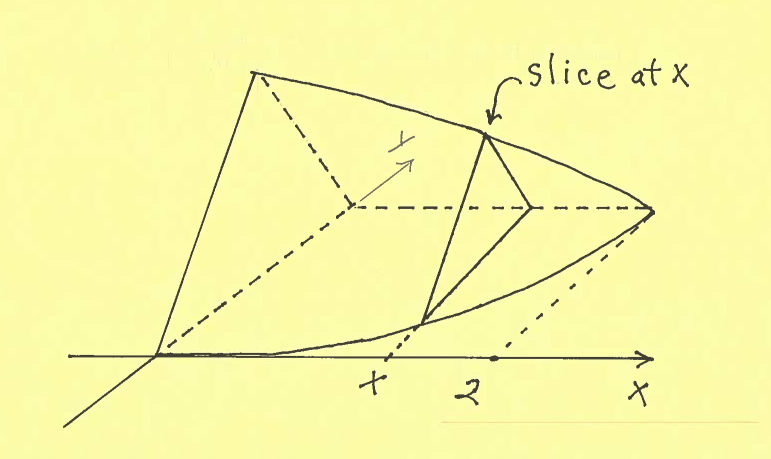 $ \ \ \ $
$ \ \ \ $
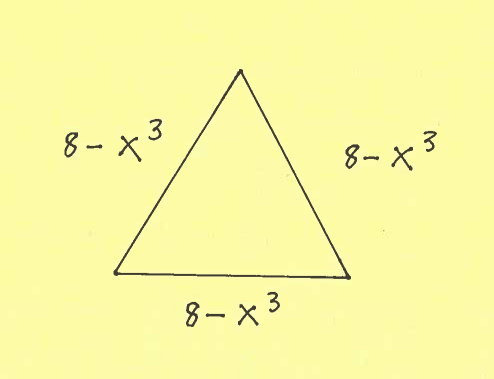
Consider an equilateral triangle of edge length $z$ and height $h$ in the diagram below.
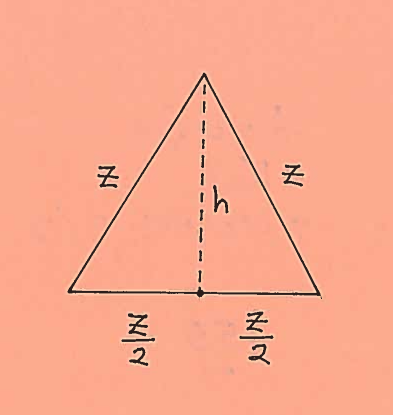
Using the Pythagorean Theorem we get
$$ h^2 + \Big({ z \over 2 }\Big)^2=z^2 \ \ \ \ \longrightarrow $$
$$ h^2 + { z^2 \over 4 }=z^2 \ \ \ \ \longrightarrow $$
$$ h^2 = { 3 \over 4 }z^2 \ \ \ \ \longrightarrow $$
$$ h = { \sqrt{3} \over 2 }z $$
Thus the area of an equilateral triangle with edge $z$ is
$$ Area = {1 \over 2} (base)(height) = {1 \over 2}(z)\Big({ \sqrt{3} \over 2 }z \Big)
= { \sqrt{3} \over 4 }z^2 $$
so that the area of the equilateral triangular cross-section of edge length $ 8-x^3 $ is $ A(x)= { \sqrt{3} \over 4 }(8-x^3)^2 $. Thus the total volume of this static solid is
$$ Volume = \int_{0}^{2} { \sqrt{3} \over 4 }(8-x^3)^2 \ dx $$
SOLUTION 3: c.) Here are sketches of the base of the solid and the entire solid.
 $ \ \ \ $
$ \ \ \ $
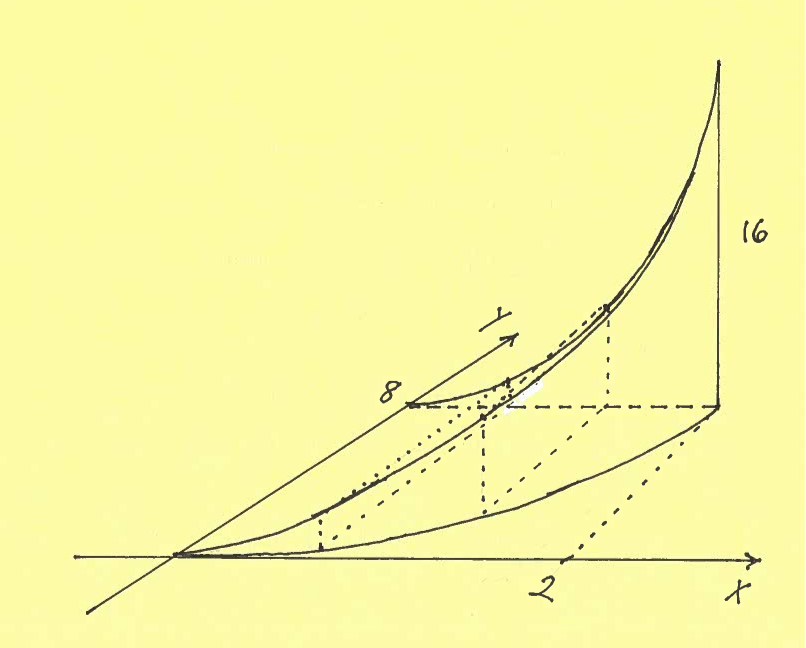
Here are sketches of a rectangular cross-section at $x$, together with its dimensions, where the height $h$ is unknown.
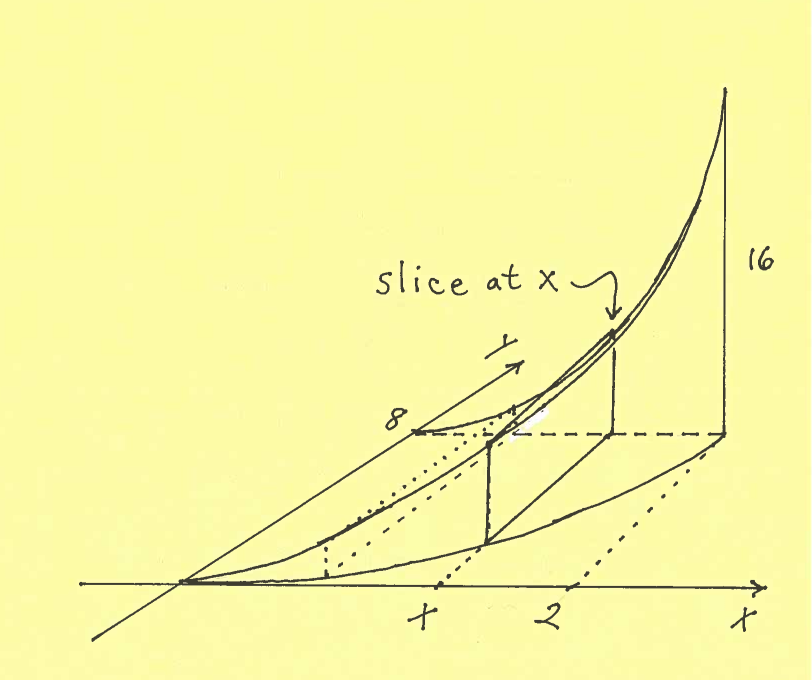 $ \ \ \ $
$ \ \ \ $
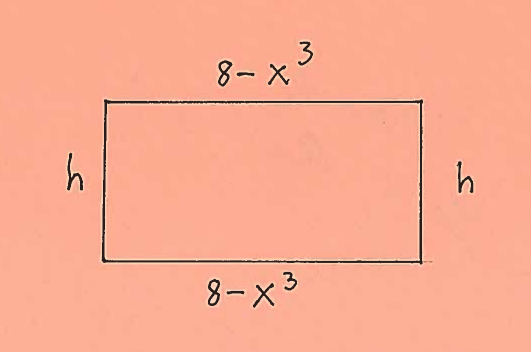
To find the height $h$ we use the triangles's perimeter of 16 getting
$$ 2h + 2(8-x^3) = 16 \ \ \ \ \longrightarrow $$
$$ h + (8-x^3) = 8 \ \ \ \ \longrightarrow $$
$$ h = x^3 $$
so that the area of the rectangular cross-section is $ A(x)= (height)(base) = (x^3)(8-x^3)= 8x^3-x^6 $. Thus the total volume of this static solid is
$$ Volume = \int_{0}^{2} (8x^3-x^6) \ dx $$
Click HERE to return to the list of problems.
 $ \ \ \ $
$ \ \ \ $

 $ \ \ \ $
$ \ \ \ $

 $ \ \ \ $
$ \ \ \ $

 $ \ \ \ $
$ \ \ \ $

 $ \ \ \ $
$ \ \ \ $


 $ \ \ \ $
$ \ \ \ $

 $ \ \ \ $
$ \ \ \ $
